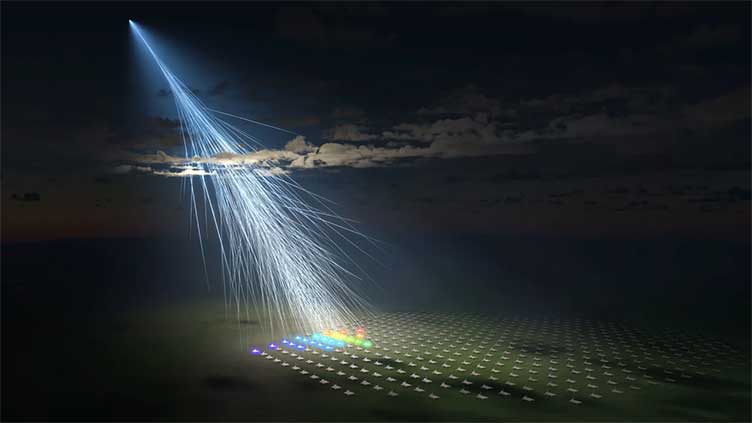Mysterious cosmic ray observed in Utah came from beyond our galaxy, scientists say

Technology
Space scientists are seeking to understand the enigmatic origins of powerful cosmic rays
(Web Desk) - Space scientists seeking to understand the enigmatic origins of powerful cosmic rays have detected an extremely rare, ultra-high-energy particle that they believe traveled to Earth from beyond the Milky Way galaxy.
The energy of this subatomic particle, invisible to the naked eye, is equivalent to dropping a brick on your toe from waist height, according to the authors of new research published Thursday in the journal Science.
It rivals the single most energetic cosmic ray ever observed, the “Oh-My-God” particle that was detected in 1991, the study found.
Cosmic rays are charged particles that travel through space and rain down on Earth constantly.
Low-energy cosmic rays can emanate from the sun, but extremely high-energy ones are exceptional. They are thought to travel to Earth from other galaxies and extragalactic sources.
“If you hold out your hand, one (cosmic ray) goes through the palm of your hand every second, but those are really low-energy things,” said study coauthor John Matthews, a research professor at the University of Utah.
“When you get out to these really high-energy (cosmic rays), it’s more like one per square kilometer per century. It’s never going through your hand.”
Despite years of research, the exact origins of these high-energy particles still aren’t clear. They are thought to be related to the most energetic phenomena in the universe, such as those involving black holes, gamma-ray bursts and active galactic nuclei, but the biggest discovered so far appear to originate from voids or empty space — where no violent celestial events have taken place.
The recently discovered particle, nicknamed the Amaterasu particle after the sun goddess in Japanese mythology, was spotted by a cosmic ray observatory in Utah’s West Desert known as the Telescope Array.
The Telescope Array, which started operating in 2008, is made up of 507 ping-pong table-size surface detectors covering 700 square kilometers (270 square miles).
It has observed more than 30 ultra-high-energy cosmic rays but none bigger than the Amaterasu particle, which struck the atmosphere above Utah on May 27, 2021, raining secondary particles to the ground where they were picked up by the detectors, according to the study.
“You can look …(at) how many particles hit each detector and that tells you what the energy of the primary cosmic ray was,” Matthews said.
The event triggered 23 of the surface detectors, with a calculated energy of about 244 exa-electron volts. The “Oh My God particle” detected more than 30 years ago was 320 exa-electron volts.
For reference, 1 exa-electron volt equals 1 billion gigaelectron-volts, and 1 gigaelectron volt is 1 billion electron volts. That would make the Amaterasu particle 244,000,000,000,000,000,000 electron volts. By comparison, the typical energy of an electron in the polar aurora is 40,000 electron volts, according to NASA.
An ultra-high-energy cosmic ray carries tens of millions of times more energy than any human-made particle accelerator such as the Large Hadron Collider, the most powerful accelerator ever built, explained Glennys Farrar, a professor of physics at New York University.
“What is required is a region of very high magnetic fields — like a super-sized LHC, but natural. And the conditions required are really exceptional, so the sources are very very rare, and the particles are dissipated into the vast universe, so the chances of one hitting Earth are tiny,” said Farrar, who wasn’t involved in the study, via email.
The atmosphere largely protects humans from any harmful effects from the particles, though cosmic rays sometimes cause computer glitches.
The particles, and space radiation more broadly, pose a greater risk to astronauts, with the potential to cause structural damage to DNA and altering many cellular processes, according to NASA,.


